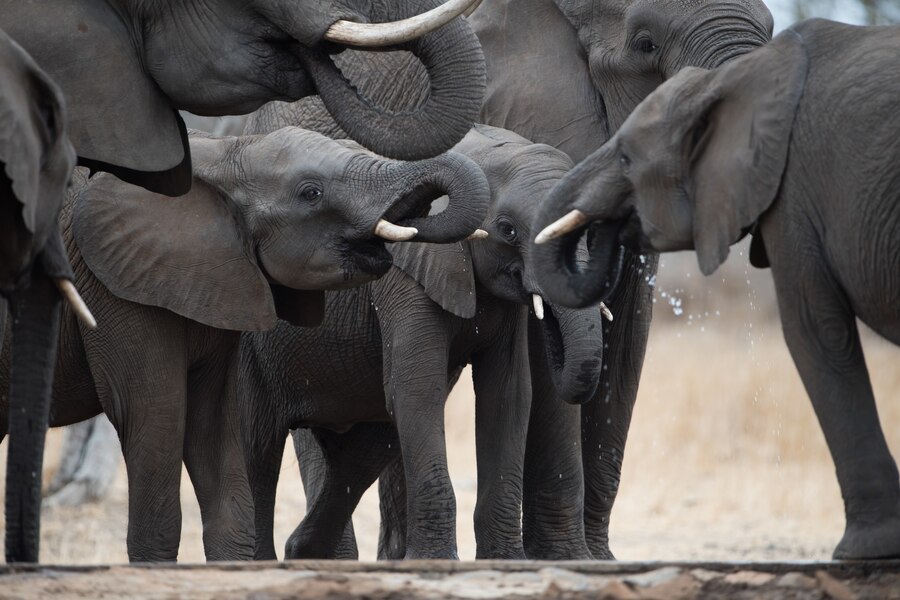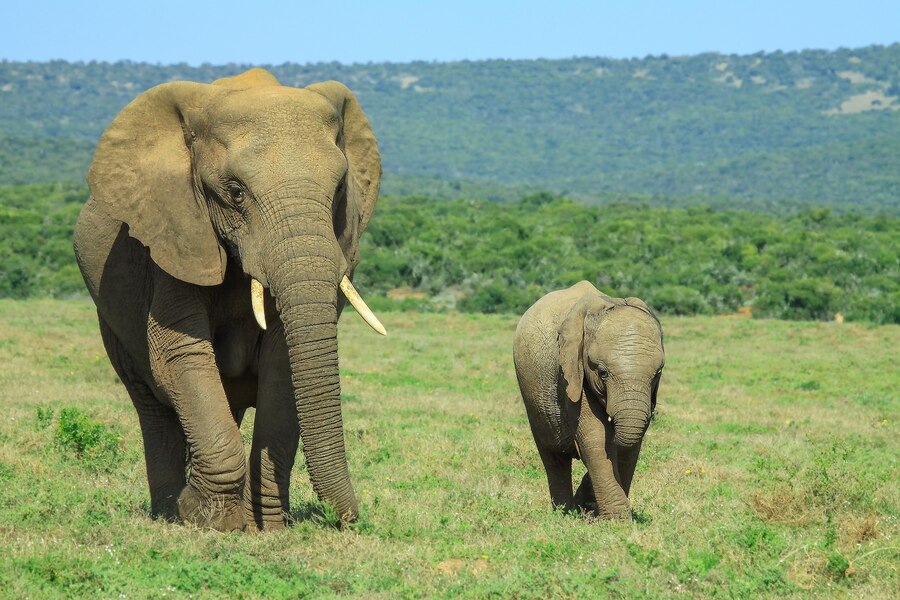Asian elephant vs African elephant:When it comes to the mighty world of elephants, the Asian elephant and the African elephant stand out as the two kings of the elephant groups. These magnificent creatures have some specialties are same but also have many differences. African elephants have large trunks and bent backs. Asian elephants have round heads, small ears and straight backs. So, let’s embark on this fascinating journey of these specialties and diffrences these two different animals.
Physical characteristics
Asian Elephant
The Asiatic elephant is the largest land animal on the Asian continent. They occur in dry to wet forest and grasslands in 13 countries in southern and southern Asia. On average, Asian elephants stand between 6.6 to 9.8 feet tall and weigh anywhere from 4,500 to 11,000 pounds. they have a rounded back, and a finger-like projection at the tip of their trunk.
African elephant
African elephants are the largest land animals on earth. They can grow to be 13 to 16 feet long and weigh 5,000 to 14,000 pounds. In their enormous size and shape, they same with the of Africa animals.and they have two finger-like projections at the tip of their trunk.
Habitat and Range
Asian Elephant
Asian elephants live in a variety of ecosystems, primarily in Asia’s forests, grasslands, and even swamps. Their range is spread across countries like India, Sri Lanka, Thailand and Indonesia. These elephants have adapted themselves to this environment.
African Elephant
African elephants are native to the different landscapes of Africa. They can be found in various regions, including savannas, forests, and deserts, across countries such as Kenya, Tanzania, Botswana, and Zimbabwe. The African elephant’s change their habits to the situation of environment.
Social Structure and Behavior

Social Structure and Behavior
Asian Elephant
asiatic elephants tend to live a mostly small family groups. They are known for forming tight-knit family units led by a matriarch. These groups are often composed of related females and their young. Male Asian elephants typically lead solitary lives.
African Elephant:
African elephants are known because of their big family groups. They live in larger group, comprising females, young calves, and a dominant matriarch. These groups can consist of dozens of individuals, creating a strong and complete groups.
Diet and Feeding Habits
Asian Elephant
The diet of Asian elephants primarily consists of a variety of vegetation, including grasses, leaves, bark, and fruits. They are herbivores and rely on their strong trunk to forage and feed on plants. Their diet may vary depending on the season and the of food in their habitat.
African Elephant
African elephants are also herbivores, and their diet consists of plant material such as grasses, trees, shrubs and fruits. Their large size allows them to consume large amounts of vegetation, making them important in creating the landscapes of their habitats.
Reproduction and Lifecycle

Social Structure and Behavior
Asian Elephant
The gestation period of Asian elephants is approximately 18 to 22 months, making it one of the longest pregnancies in the animal kingdom.
African Elephant
African elephants have a similar gestation period of 22 months, and like their Asian counterparts, they give birth to a single calf.
Conservation Status and Threats
Asian Elephant
Asian elephants face various conservation difficulties, primarily due to habitat loss and fragmentation caused by human activities. Conservation efforts are vital to ensure their survival.
African Elephant
African elephants also confront significant threats, including poaching for ivory and habitat loss. Conservation initiatives, such as anti-poaching measures and protected areas, are crucial for their preservation.
FAQs for Asian elephant vs African elephant
1. What are the main differences between Asian and African elephants?
The main differences include size, ear shape, trunk tip, and habitat range.
2. Do Asian and African elephants have similar social structures?
No, Asian elephants tend to have smaller family groups, while African elephants live in larger groups.
3. Are both animals herbivores?
Yes, both Asian and African elephants are herbivores, feeding on various plant materials.
4. How long is the gestation period for both animals?
Both Asian and African elephants have a gestation period of approximately 22 months.
conclusion
Both Asian elephants and African elephants share some characteristics but also some differences. Although they share the same family characteristics as elephants, their distinctive physical characteristics, habitat, social structure, and conservation status make them distinct in their own right. It is our responsibility to ensure the protection of these incredible creatures by supporting conservation efforts and raising awareness of the plight they face in the wild.


